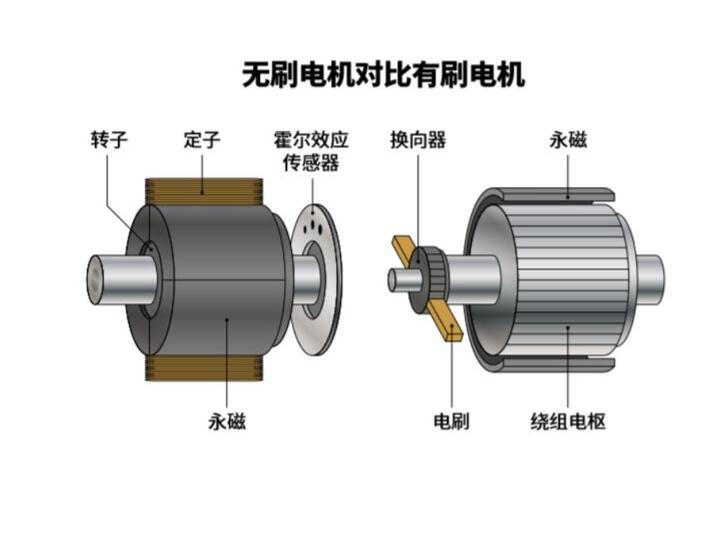What are the differences between the speed regulation modes of the brush motor and the brushless motor?

Brushless motor adopts electronic commutation, the coil does not move, and the magnetic pole rotates. Brushless motor uses a set of electronic equipment to sense the position of permanent magnetic pole through Hall element. According to this perception, the electronic circuit is used to switch the current direction in the coil in time to ensure that the magnetic force in the correct direction is generated to drive the motor, thus eliminating the disadvantages of the brush motor.
In fact, the control of both motors is voltage regulation. Only when brushless DC adopts electronic commutation can it be realized by digital control. Brushless DC can be commutated by carbon brush, and can be controlled by traditional analog circuit (such as silicon controlled rectifier), which is relatively simple.
1.The speed regulation process of the brush motor is to adjust the power supply voltage of the motor. The adjusted voltage and current are converted through the commutator and brush to change the magnetic field intensity generated by the electrode, thus changing the speed. This process is called variable voltage speed regulation.
2.The speed regulation process of brushless motor is that the power supply voltage of the motor is constant, the control signal of electrical regulation changes, and the microprocessor changes the switching speed of high-power MOS transistor to achieve speed regulation. This process is called variable frequency speed regulation.
Brushless motor is a typical mechatronic product, which is composed of motor body and driver. The brushless motor operates in automatic control mode. Under the condition of variable frequency speed regulation, another starting winding will not be added to the rotor of synchronous motor starting with large load, and there will be no oscillation and loss when the load suddenly changes.





















